Cameras and Sensors for Embedded Vision
WHILE ANALOG CAMERAS ARE STILL USED IN MANY VISION SYSTEMS, THIS SECTION FOCUSES ON DIGITAL IMAGE SENSORS
While analog cameras are still used in many vision systems, this section focuses on digital image sensors—usually either a CCD or CMOS sensor array that operates with visible light. However, this definition shouldn’t constrain the technology analysis, since many vision systems can also sense other types of energy (IR, sonar, etc.).
The camera housing has become the entire chassis for a vision system, leading to the emergence of “smart cameras” with all of the electronics integrated. By most definitions, a smart camera supports computer vision, since the camera is capable of extracting application-specific information. However, as both wired and wireless networks get faster and cheaper, there still may be reasons to transmit pixel data to a central location for storage or extra processing.
A classic example is cloud computing using the camera on a smartphone. The smartphone could be considered a “smart camera” as well, but sending data to a cloud-based computer may reduce the processing performance required on the mobile device, lowering cost, power, weight, etc. For a dedicated smart camera, some vendors have created chips that integrate all of the required features.
Cameras
Until recent times, many people would imagine a camera for computer vision as the outdoor security camera shown in this picture. There are countless vendors supplying these products, and many more supplying indoor cameras for industrial applications. Don’t forget about simple USB cameras for PCs. And don’t overlook the billion or so cameras embedded in the mobile phones of the world. These cameras’ speed and quality have risen dramatically—supporting 10+ mega-pixel sensors with sophisticated image processing hardware.
Consider, too, another important factor for cameras—the rapid adoption of 3D imaging using stereo optics, time-of-flight and structured light technologies. Trendsetting cell phones now even offer this technology, as do latest-generation game consoles. Look again at the picture of the outdoor camera and consider how much change is about to happen to computer vision markets as new camera technologies becomes pervasive.
Sensors
Charge-coupled device (CCD) sensors have some advantages over CMOS image sensors, mainly because the electronic shutter of CCDs traditionally offers better image quality with higher dynamic range and resolution. However, CMOS sensors now account for more 90% of the market, heavily influenced by camera phones and driven by the technology’s lower cost, better integration and speed.
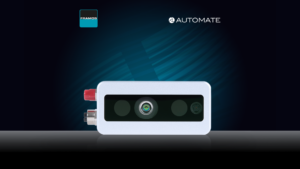
FRAMOS to Showcase Automation Solutions at the Largest Robotics and Automation Show in North America
15th of April 2024 – FRAMOS, a leading global expert in vision systems dedicated to innovation and excellence in enabling devices to see and think, is pleased to announce its presence at the Automate Show 2024 in Chicago, Illinois, USA. FRAMOS will be joining more than 800 game-changing exhibitors at the Automate Show from May

AI Chips and Chat GPT: Exploring AI and Robotics
AI chips can empower the intelligence of robotics, with future potential for smarter and more independent cars and robots. Alongside the uses of Chat GPT and chatting with robots at home, the potential for this technology to enhance working environments and reinvent socializing is promising. Cars that can judge the difference between people and signposts
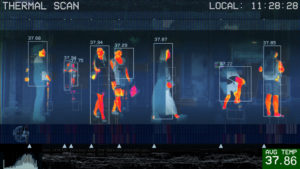
From Challenger to Leader: China Consolidates Its Presence in Thermal Imaging
This market research report was originally published at the Yole Group’s website. It is reprinted here with the permission of the Yole Group. China shifts its focus to thermal imaging technologies, securing 50% of worldwide shipments in 2023. OUTLINE The thermal camera market is expected to grow to US$9.1 billion in 2029, with an estimated
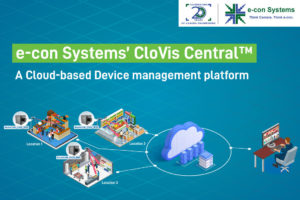
CloVis Central : A Cloud-based Device Management Platform
This blog post was originally published at e-con Systems’ website. It is reprinted here with the permission of e-con Systems. As an easy-to-use camera management platform, CloVis Central enables remote monitoring, configuration, and control of multiple cameras. In turn, this provides intelligent solutions for managing visual data across various applications. Paired with the e-con Systems’

Multi-camera 3D Scanning in Medical Applications Using Embedded Cameras
This blog post was originally published at TechNexion’s website. It is reprinted here with the permission of TechNexion. 3D scanning finds applications in multiple domains such as textile design, 3D printing, home remodeling, virtual reality, manufacturing, etc. Medical science hugely benefits from camera-enabled 3D scanning given that it is a non-invasive technique. 3D scanning is
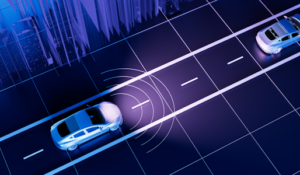
Unlocking Tomorrow’s Vision: Exploring Lidar Technology Trends in 2024
As autonomous driving continues to revolutionize the automotive industry, sensor technologies have undergone unprecedented advancements. One innovation standing out is Light Detection and Ranging (Lidar). Utilizing laser light to measure distances and create precise 3D maps of surroundings, Lidar has emerged as a game-changer in perception capabilities, especially for the automotive industry. With roots tracing

What Changed From VCRs to Software-defined Vision?
The Edge AI and Vision Alliance’s Jeff Bier discusses how advances in embedded systems’ basic building blocks are fundamentally changing their nature. The Ojo-Yoshida Report is launching the second in our Dig Deeper video podcast series, this issue focusing on “Embedded Basics.” Our guest for the inaugural episode is Jeff Bier, founder, Edge AI and Embedded Vision
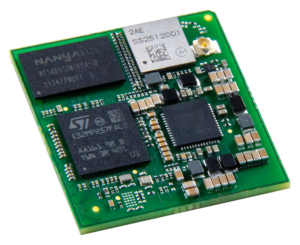
Digi International to Unveil the New Digi ConnectCore MP25 System-on-module for Next-gen Computer Vision Applications at Embedded World 2024
Versatile, wireless and secure system-on-module based on the STMicroelectronics STM32MP25 processor improves efficiency, reduces costs and enables edge processing for innovative new devices MINNEAPOLIS, April 4, 2024 – Digi International (NASDAQ: DGII, www.digi.com), a leading global provider of Internet of Things (IoT) connectivity products and services, is poised to introduce the wireless and highly power-efficient
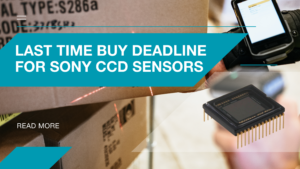
FRAMOS Announces Last Time Buy Deadline for Sony CCD Sensors
3rd of April 2024 – FRAMOS, a leading global expert in vision systems, dedicated to innovation and excellence in enabling devices to see and think, is pleased to announce the Last Time Buy deadline for all Sony CCD Sensors. In line with Sony’s previous notification on January 15th, 2015, where Sony notified its customer about

Adding Vision to Your Embedded Devices? Simplify Your Imaging Journey with FRAMOS and Aetina
2nd of April, 2024 – As Elite members of the NVIDIA Partner Network and part of the NVIDIA Jetson ecosystem, FRAMOS and Aetina have combined their strengths to showcase solutions for embedded device innovators at ISC West 2024, April 9-12 at The Venetian Expo, Las Vegas. This cooperation brings the collective benefits of FRAMOS’ FSM:GO

